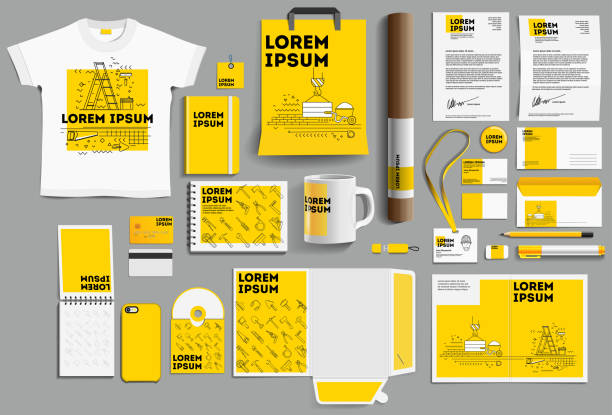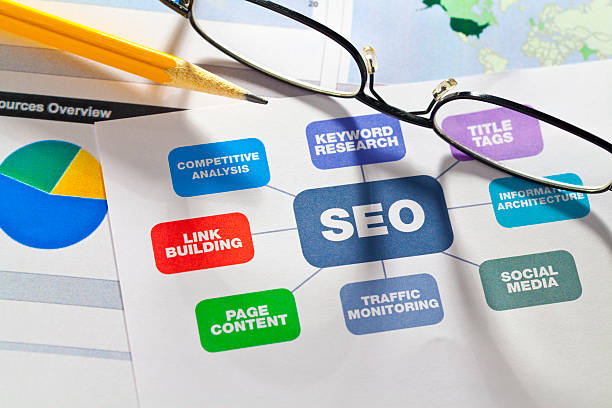Developing a Strong Brand Identity
Brand identity is one of the most important aspects of a business. You need to make sure that your business has a clear understanding of how it wants to represent itself. Brand identity is also one of the most difficult things to achieve. It doesn’t matter how good your products or services are. If they are not associated with your brand identity, you won’t succeed. Developing a strong brand identity will help you and your business succeed.
Table of Contents
What is branding?

Branding is the process of creating a unique name, symbol, or design that identifies the products or services of a business and differentiates it from competitors’ offerings. It may also include corporate identity, e.g., logos, slogans, and colors used in marketing and advertising campaigns.
With brands competing for consumer attention in an increasingly crowded media landscape, it’s more important than ever to have a strong brand identity following clear branding principles.
Why is branding important?
Branding is what helps you stand out from the competition, communicate your message and build trust with your audience. A strong brand identity gives you a solid foundation that supports everything else you do in business. With a solid brand strategy, people will know exactly who you are and what you represent.
It’s important to understand that branding is not just about the logo or design of your company; it can be much more than that. It’s how people perceive something based on their experience with it: their emotions, sensory perceptions, and memories associated with it. They also consider other factors like price point, quality of service or product as well as the availability of service/product when buying from an organization (or not).
How do you create a brand identity?
The best way to create a strong brand identity is through the application of a few simple, but important principles. Your brand identity should be:
Unique and memorable
Your brand must stand out from the crowd. If someone sees your logo or name, they have to be able to immediately identify you as the source of that product or service.
Consistent across all channels and platforms

A strong brand is one that can be easily understood regardless of whether it’s communicated verbally or visually. It should also look good on everything from posters and flyers to business cards and websites. This consistency will help establish trust with potential customers who are familiar with your company’s look and feel—and convince them that you represent quality workmanship at its finest!
Authentic
People trust brands because they believe in what those brands stand for—or promise—in terms of value (both tangible benefits like price discounts; intangible ones like the peace of mind). So if people don’t believe in what your company stands for then why should they buy anything from it?
Define your target audience

In order to develop a strong brand identity, you first need to define your target audience. This will help you determine what type of person you want to attract and what problem you are solving for them. Once you know this information, it will be easier to create a message that resonates with your audience.
When identifying your target market, there are many factors that can influence the decision including age, gender, income level/salary range, lifestyle choices (e.g., where they live), family status (whether married or single), education level or occupation title (e.g., professor vs janitor).
You should consider all these aspects when determining who makes up your ideal customer base so that they feel connected with the brand in some way through similar experiences or affinities based on shared interests such as hobbies or activities outside work hours.”
Define your values, tone, and personality
Now that you know who your audience is, it’s time to get down to the nitty-gritty of defining your brand identity. To do this, you’ll need to determine what values, tone, and personality make up each aspect of your brand.
Values are the things you stand for. They’re what make people want to work with you or buy your products/services over others in your industry. For example, some companies might value sustainability when making decisions about their product or service offerings—it could be a core part of their business model and something they work toward every day.
Tone refers to how an organization communicates with its audience (i.e., its customers). A company with a friendly tone might use pictures of employees having fun on social media posts while another company uses more serious images like graphs or charts when promoting data-driven results from recent research studies conducted by scientists working at their lab facilities across the country.”
Conduct competitive research
Conducting competitive research is one of the most effective ways to identify your brand’s strengths and weaknesses. It can also help you understand how well you’re performing in comparison to your competition, which can inform future strategy.
Conducting competitive research will help identify:
- What your competitors are doing well and not so well, including what they don’t know they do well (i.e., an unappreciated strength)
- What you have that your competitors don’t have, including what they don’t know they don’t have (i.e., an underutilized resource)
Brainstorm and design.
Once you’ve defined your brand mission, values, and personality through research, it’s time to start creating visuals that will represent these aspects of your business. This can be done in many ways—using a computer or hand drawing is just one option. You may also want to consider using photography or video for some of your designs, as well.
Develop your visual identity
Once you have a brand name, it’s time to develop your visual identity. This is where you begin establishing the look and feel of your business and how it will be represented in the public eye.
First, create a logo for your brand. A logo is a visual representation of what makes your business unique. Make sure that it captures who you are as a company without being too complicated or confusing for people to understand at first glance (especially if they’re not familiar with your industry).
Second, choose one or two colours as part of a colour scheme that will represent your company consistently across all mediums—whether print materials like flyers and brochures; digital formats like logos on websites; or images on social media posts such as Twitter ads or Facebook ads — so they look cohesive when used together in any context. You might want one colour to be prominent while another acts as an accent colour (like using black lettering set against a white background) but keep these two rules in mind:
Defining your brand’s mission, values, and visual identity
The type of brand you want to build will be heavily dependent on how well you understand who you are as a brand, what you stand for, and how you want to achieve your goals. Your brand’s mission, values, and visual identity are the three core areas that you need to define before you can progress with the rest of your branding strategy.
Mission statement
The first step in creating a strong brand identity is to write a mission statement. This defines the purpose of your company, which will help guide all aspects of your brand strategy. Your mission statement should be concise and easy to understand, yet have enough depth that it can be applied across different platforms.
Values
What do you stand for? What are your core values? Values represent what an organization believes to be true about itself, its products or services, and its people (i.e., employees). Defining these key elements helps define the culture of your business, which will ultimately impact how customers receive and respond to your product or service offerings.
Visual identity
Visual identity includes any design elements representing a brand (logos, color palettes etc.) so identifying these components early on in the development process makes it easier for designers/developers down the line when designing marketing materials etc..
Conclusion
Branding is an important part of any business, but it can be difficult to get started on your own. That’s why we created this guide—to help you develop a strong brand identity that will set you apart from competitors and bring success for years to come!













